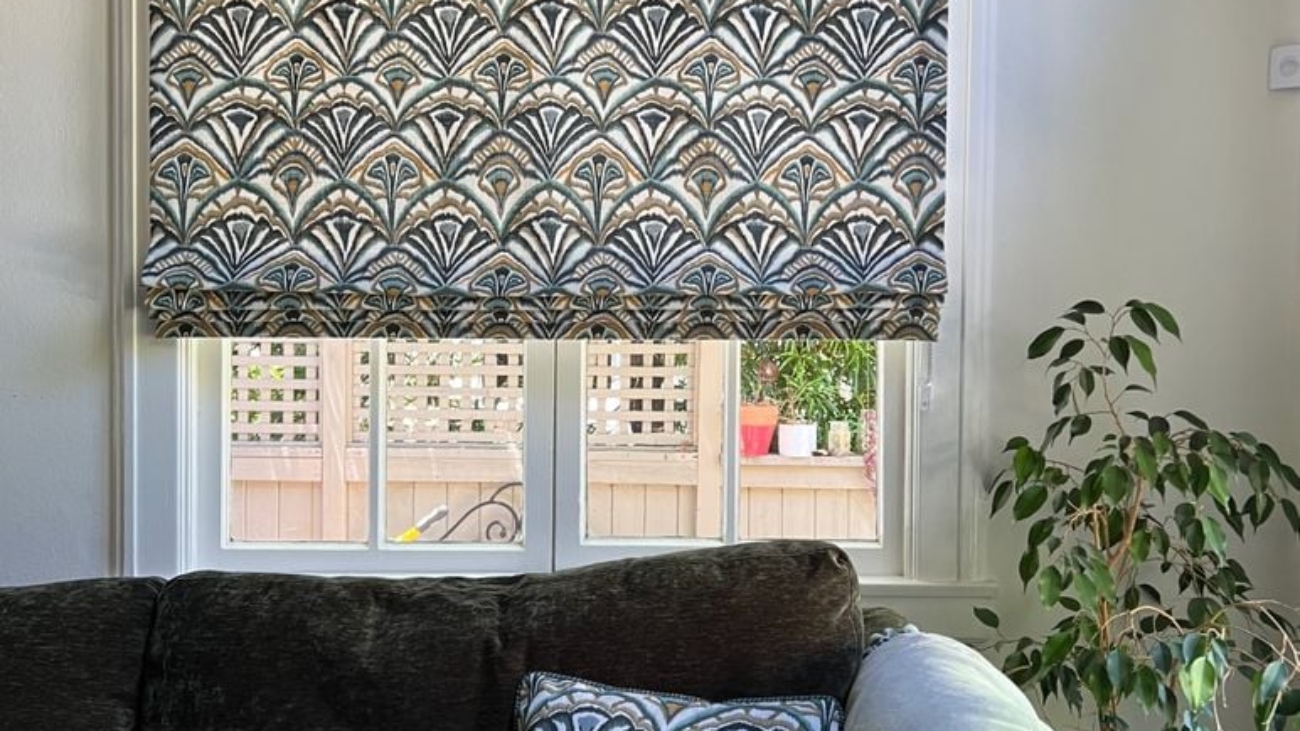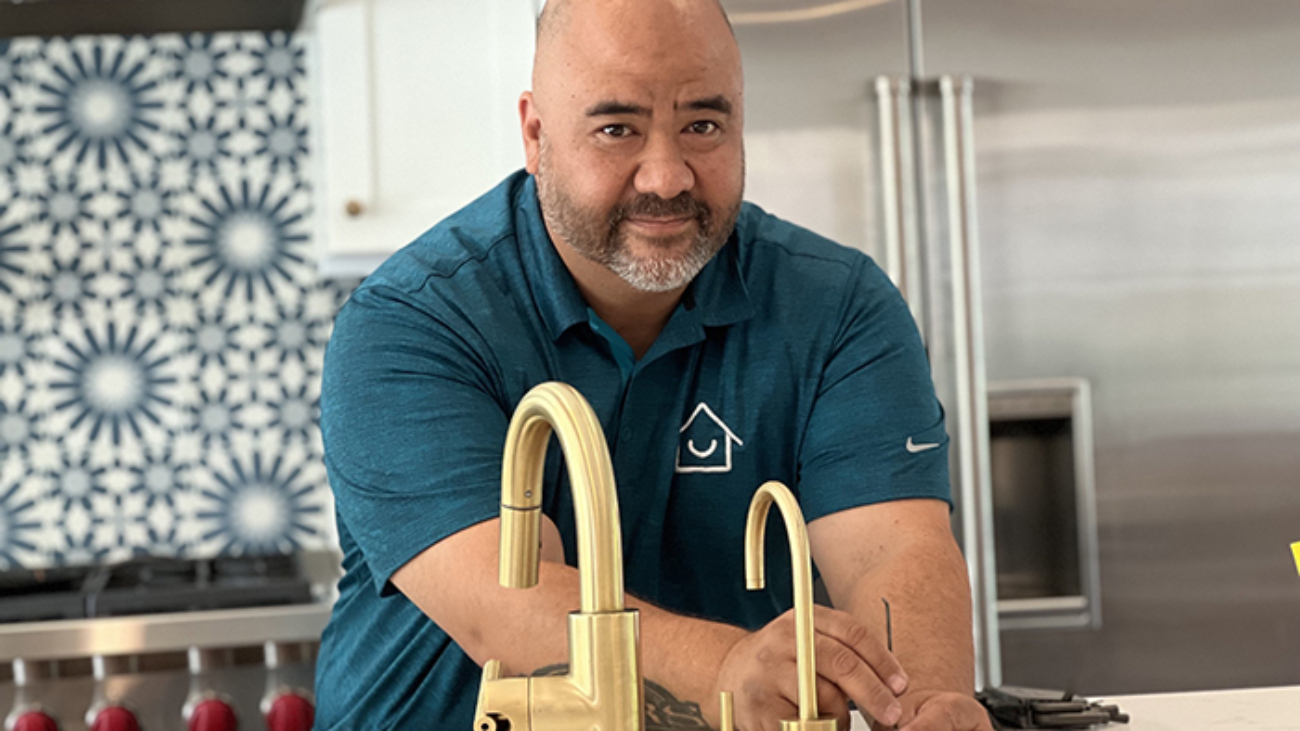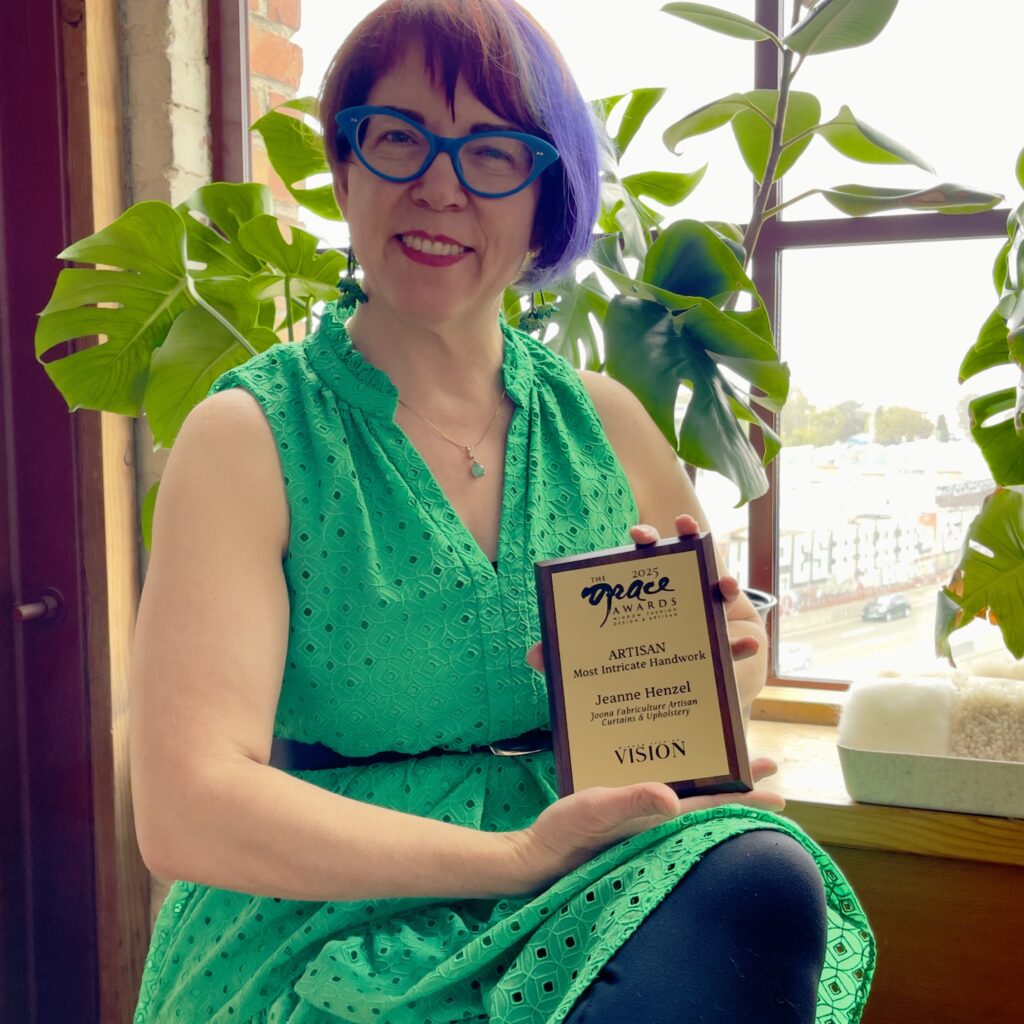
We LOVE to highlight the people in our community who make things, craftsmen and women if you will, and Jeanne Henzel Swartz is such a perfect example of that. Jeanne is the founder and principal of Joona Fabriculture, Artisan Curtains and Upholstery. She has been in business as a bespoke furniture maker and repair and restoration specialist as well as custom window treatments purveyor for 26 years. Her relationship to fabric, decor, and quality spans decades—through a previous career as a milliner and costumer for theater and film, and even further back to her childhood exploring the insides and outsides of her family’s collection of heirloom fine furnishings.
“I was fortunate,” Jeanne explains, “that we had nice quality antiques, mahogany furniture, passed down from my grand-, great-grand-, and great-great-grandparents. I remember this one set of dining room chairs in the basement – heavy, dark, animal-footed – the table was long gone! – covered in mohair velvet and stuffed with horsehair. I’d stroke and press on the fabric; I’d find a horsehair and pull it out – I remember the curl and spring of it. It was a very sensory experience. I had a fascination with traditional upholstery at a very young age!”
She continues, “It was my chore to clean and dust and polish the furniture, and to polish the brass and silver. I grew up with a respect and love for these really nice things. That style is not to my taste now – I’m much more colorful! – but my taste is eclectic. When you have multiple items being passed down from different eras within a family, like we did, you get a feeling for eclecticism and an appreciation for mixing thoughtfully; everything doesn’t have to be new.”
It is this respect for quality and history that threads through Jeanne’s work today. She notes, “I love making new things, but I also love breathing new life into old things that have a story.”
(Jeanne once told us that she would love to create a “slow furniture” movement just like the “slow food” movement and we can definitely get behind that!)
Her discerning eye, she jokingly admits, has not made life easy. “My poor mother,” she laughs. “I’ve always really delighted in superfine things, which made her life hard. She’d buy something nice for me, and it wouldn’t be up to my standards. But that’s actually really a good thing in the world of custom furnishings: to be able to recognize what quality is, to aspire to it, to value it, and to want it for yourself and your clients.”
She also credits her love of art and museums and her mentors over the years for training her eye, “You have to be able to see it, and then know what it takes to be able to create at that level.”
A self-professed “big fabric nerd” with a fine art degree in sculpture, Jeanne’s first career was in costume design and construction for regional theater: hats, showgirl dresses, jewelry, shoes, masks, gloves. And not just clothing, but also truly unique items, like the time she modified a goat skin, turning it into a leopard costume for a production of Huckleberry Finn.
Back then, as a way to augment that income, Jeanne was inspired to start making slipcovers. She laughs, “Making clothing for furniture was easier! I never had a sofa tell me I made it look fat!”
Around that time, she had her first union job, as a costumer for the film industry, which was a step up. She recalls being shocked at how different the culture was compared to theater. “We were paid by the hour, plus time and a half, double time, and triple time. Everyone was happy and relaxed, not stressed and angry. That’s when I started to realize that regional theaters were not a healthy place for me to be.”
She recounts how, soon after that, a woman who had been mentoring her in how to make the slipcovers decided to move to New York City for a master’s level training program, and offered to sell her upholstery business to Jeanne.
Jeanne said yes.
Barely two weeks later, the San Francisco Opera came calling, asking if she would come and work in their millinery shop, a dream job for some. But by then, the die had been cast.
Jeanne has no regrets. She says, “Looking back over my work history at the time, I realized that I am a leader, and that being a self-employed entrepreneur was a better fit for me.”
But leading is not at all a solo endeavor. Jeanne explains, “I love to work collaboratively with other artisans, designers, fabricators, woodworkers, glass artists, fiberglass artists, metal artists, fine hand embroiderers who custom weave with materials from mills in Europe that are hundreds of years old… together we can make all sorts of amazing things!
“I also love making things whole,” she adds, referring to the repair and restoration part of her business. She recounts a story from 10 years ago, of a rocking chair from the mid-1800s that had belonged to the client’s grandmother, and that the client herself had been rocked in as a child. “It was in very sad shape. The tack rails, that area where you attach upholstery onto the wood, had been redone so many times that there were just little shreds of wood remaining. I cut those rails off and made new ones, glued and doweled them in place. To restore the distribution of the original finish from where the wood had been rubbed bare, I used a specialty product that liquefies the current finish and allows me to spread it around, while incorporating a bit of new product. “From there I reassembled, re-dowelled, and reupholstered, giving the chair a whole new life!”
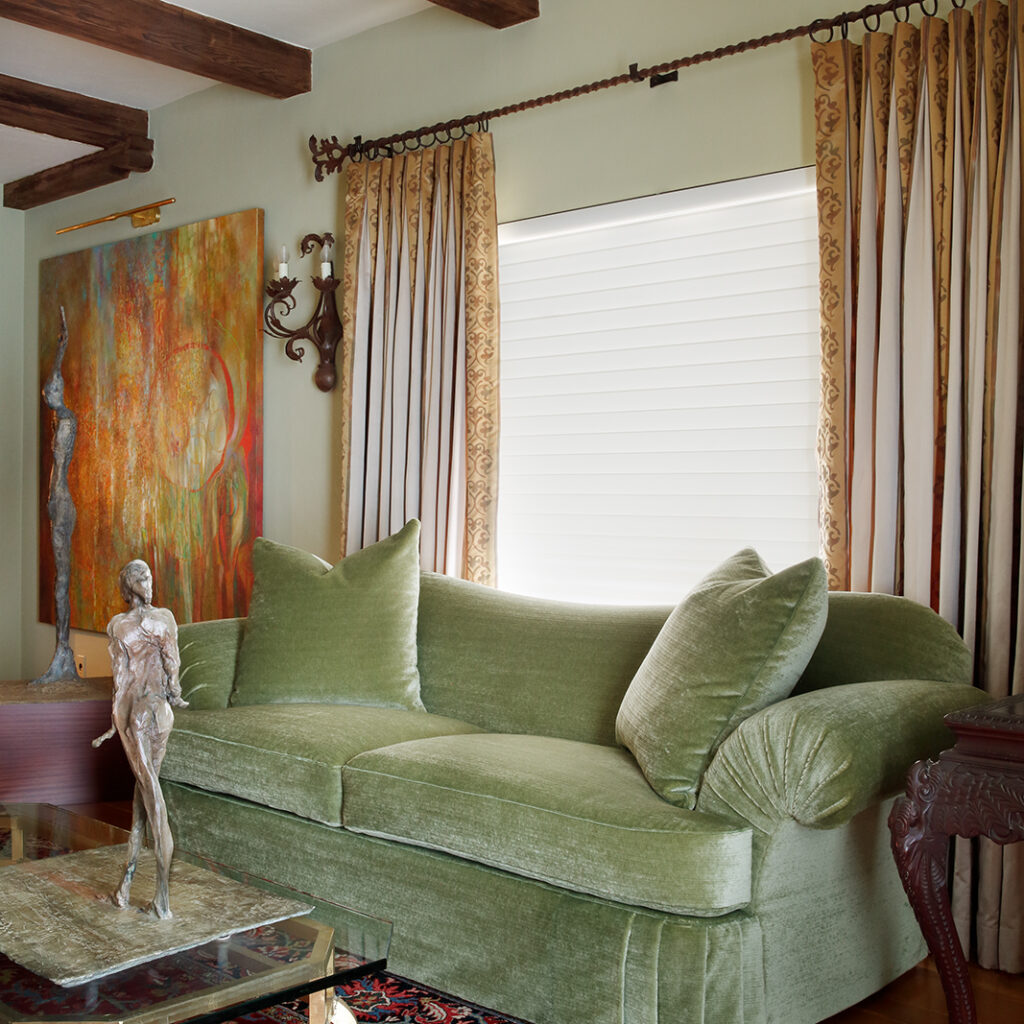
In today’s fast-paced, single-use world, who Jeanne is and what she does, her dedication to history, value, longevity, and craft, is absolute treasure.
Joona Fabriculture occupies two loft spaces – a workroom and adjacent showroom/meeting space, at the historically-apt Cotton Mill Studios in Oakland. Visiting her location is a delight, like stumbling upon an old-world cobbler hard at work on making magic shoes.
With one full-time operations manager, one part-time apprentice, and two part-time production employees, Jeanne designs, builds, and restores furnishings in the workshop. And she hosts visits for clients and interior designers who wish to meet in person in her showroom, where they can lay eyes and hands on her curated library of fabrics and materials.
Jeanne hosts educational lunch-and-learns for design professionals on topics ranging from Window Treatments 101 to business topics to performance products to more in-depth explorations of shade motorization and home automation. Her showroom features a courtesy textile research library for design professionals as well samples from the lines of custom draperies and shades that she represents, including Sunbrella, which designated her as their sole Bay Area partner and purveyor of their new line of indoor, fade-resistant window treatments.
Curtains and the houses that need them present yet another set of complicated problems and solutions that speak to Jeanne’s engineer/artist mind.
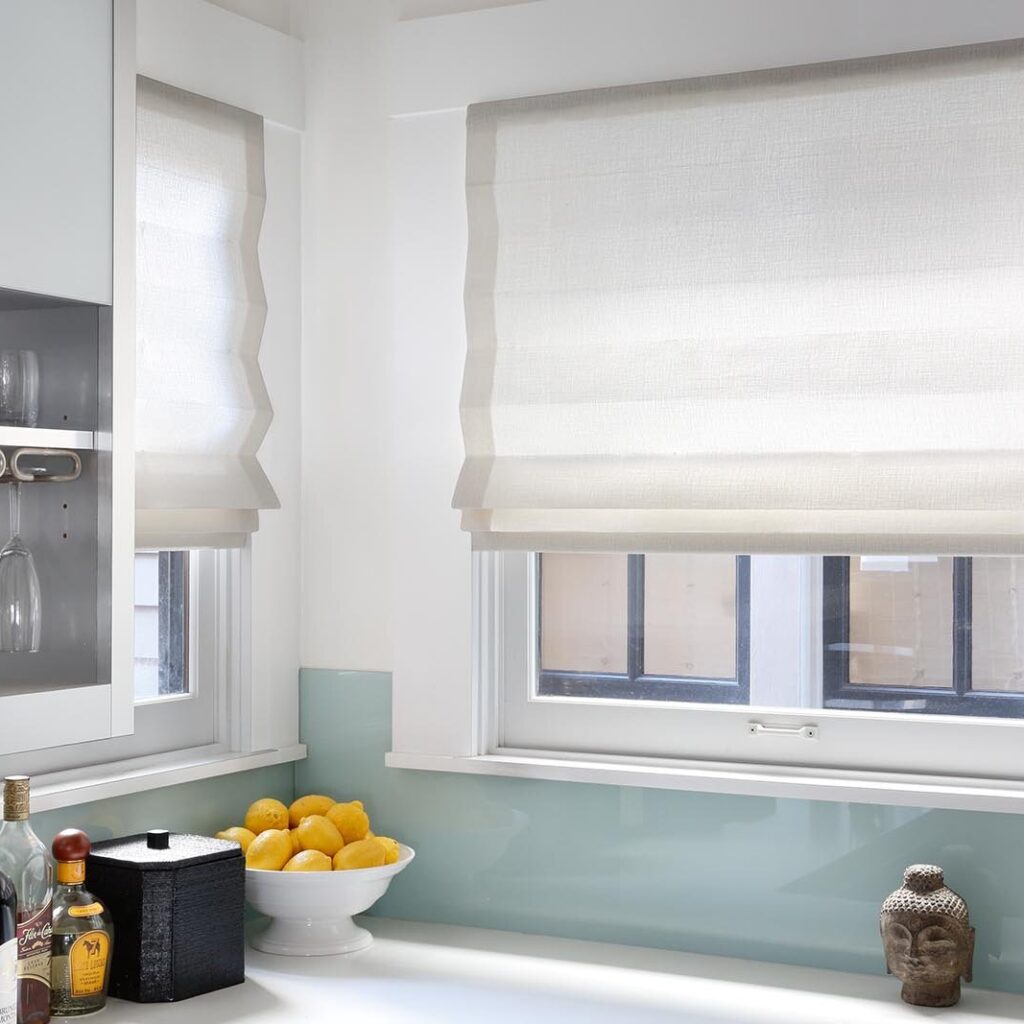
She says, “To meet the needs of a contemporary homeowner in a house that was not designed for the things we are able to do now, like motorization, and adapting newer styles to very traditional Edwardian-era or Victorian era-homes, for example, means specifying contemporary window treatments that can feel ‘at home’ but don’t look like your grandmother’s drapes.”
Of course, with new construction, she explains, “You can build in pockets above, below or to the side and your window treatments can disappear into them with motorization.”
Drapery, she notes, is “fabric in motion. Sometimes, it’s fabric being beautiful. Being itself. Sometimes it’s function over form; and sometimes it’s the other way around.
“I train the interior designers I work with to ask appropriate questions of their clients, so that we can design and engineer collaboratively to achieve the window treatments that will fulfill those needs. Window treatments aren’t really taught in design school,” she adds. “They teach a lot about code, but code doesn’t encompass how to achieve privacy, or address heat and cold insulation, and make choices regarding light filtration.
“We have products that are engineered to filter some or all of the light, and can keep a house warmer or cooler, depending on the season. We need to consider what to prioritize. Do you want to be able to see your amazing view? We have solar screen cloth, which does a great job of isolating heat while still being see-through. We have honeycomb shades, and other highly-engineered products developed by materials scientists who are working to make shades more effective and even less toxic! We have lines specifically developed for people with chemical and environmental sensitivities.
“Last year, Sunbrella unveiled a new line of solution-dyed acrylic material for curtains, Roman shades and solar shade fabrics, which were revolutionary in terms of how they look. Solar shades have traditionally been a simple plastic mesh screen for many years. Now you can specify houndstooth and other patterns and colors that look like textiles.”
Today, Jeanne continues to expand her skills and share her knowledge, attending and presenting at conferences in both the custom furnishings and window treatment industries, and traveling to Europe every year to meet with her mentors who are master-upholsterers.
“Our industry is so generous in terms of teaching,” she says appreciatively, adding, “We know that there are not that many of us!”
To learn more about Joona Fabriculture, visit the website: joonacreates.com
__________
PHOTO CAPTIONS: Featured Image: Custom window coverings and pillow by Joona Fabriculture. First image: Jeanne Henzel Swartz in her Oakland studio, holding the IWCE Award for Most Intricate Handwork. Second image (in-text): Custom upholstered sofa for which Jeanne won the IWCE award. Third image (in-text): Custom kitchen window treatments by Joona Fabriculture (from their portfolio).
